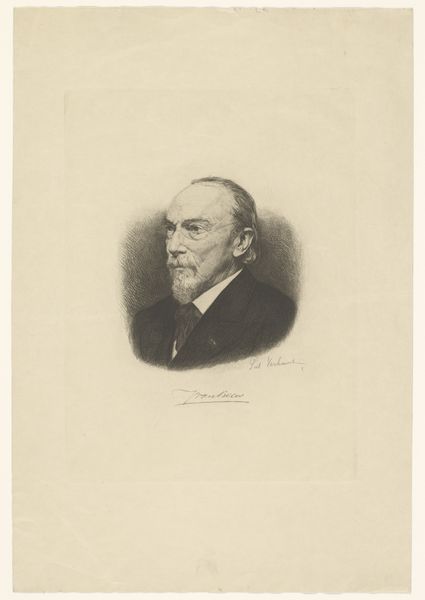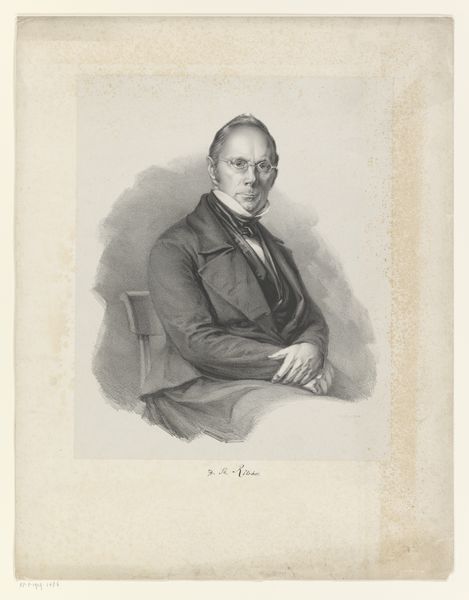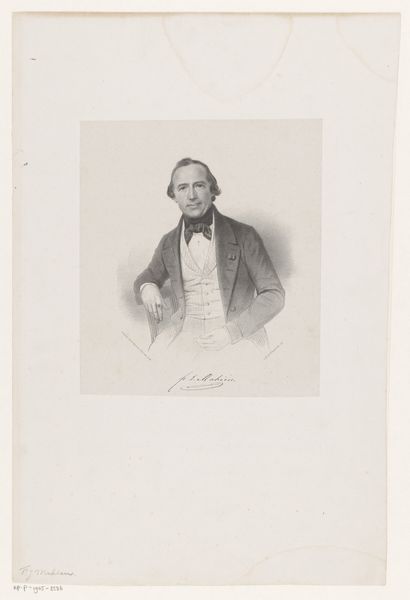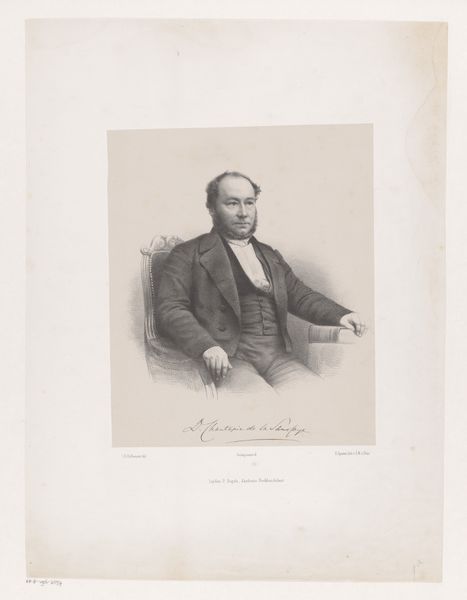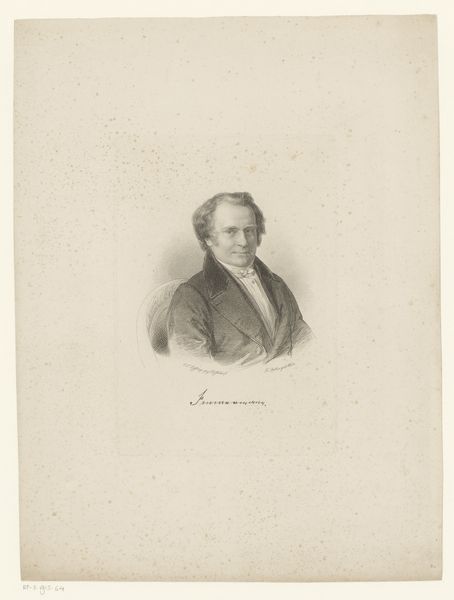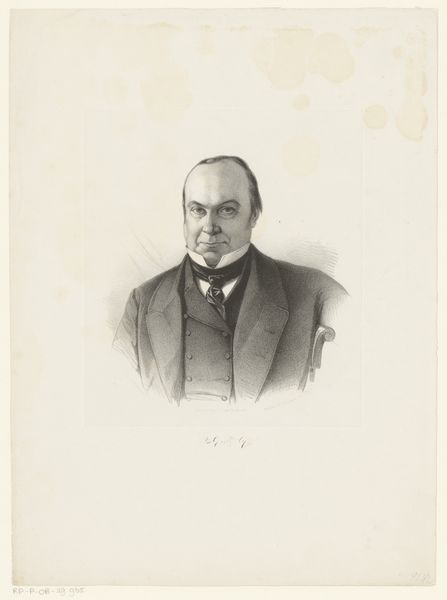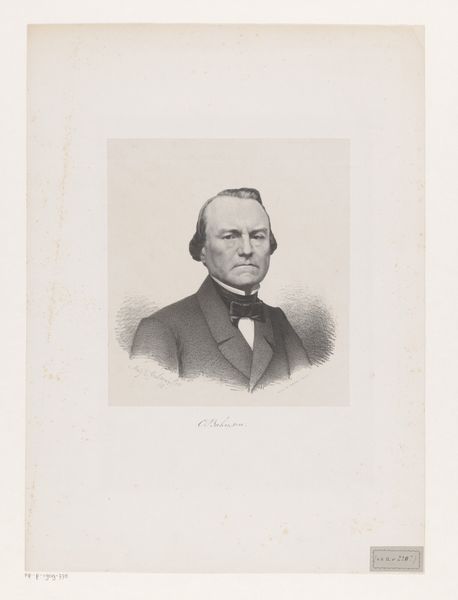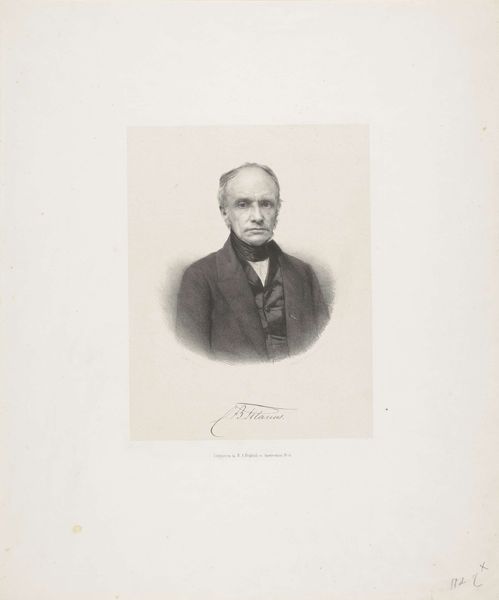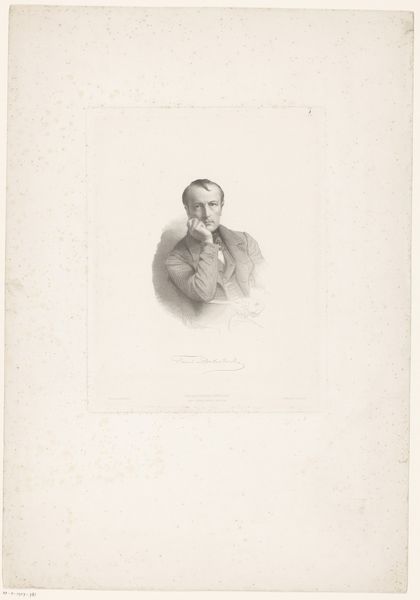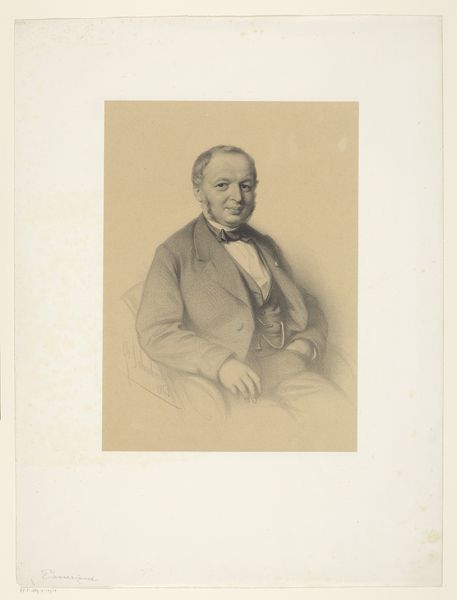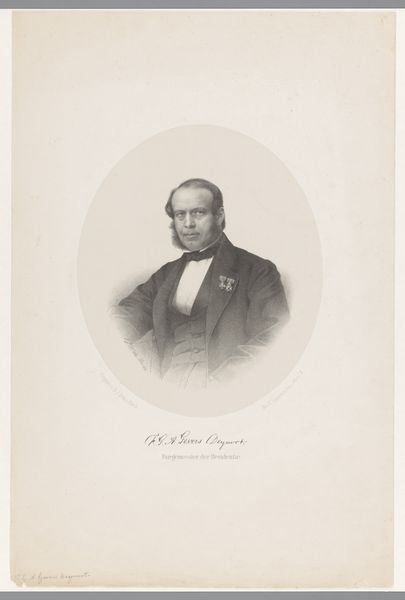
drawing, print
#
portrait
#
pencil drawn
#
drawing
# print
#
pencil drawing
#
realism
Dimensions: height 300 mm, width 222 mm
Copyright: Rijks Museum: Open Domain
Willem Philip van der Veken rendered this portrait of an unknown man using a lithographic crayon. Lithography involves drawing with a greasy crayon onto a flat stone or metal plate, which is then treated to accept ink only in the drawn areas. The printmaker pulls paper against the surface and transfers the image. This particular print exemplifies the technique’s capacity to create fine gradations of tone, imitating the look of a pencil drawing. Consider how this process democratized image-making. Unlike engraving, which requires specialized tools and skills, lithography allowed artists to create multiple copies of their work more easily. The social context of lithography is also important; as a relatively accessible printing method, it was often used for commercial purposes, such as posters and advertisements, blurring the boundaries between art and everyday life. By paying attention to the materials and processes of creation, we can better understand the social and cultural significance of this portrait, as well as its place within the history of art and visual communication.
Comments
No comments
Be the first to comment and join the conversation on the ultimate creative platform.
